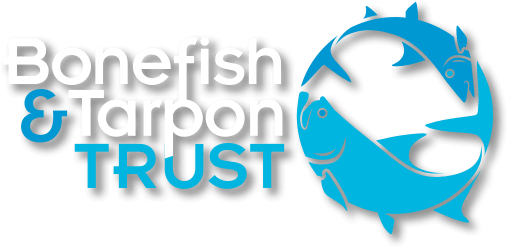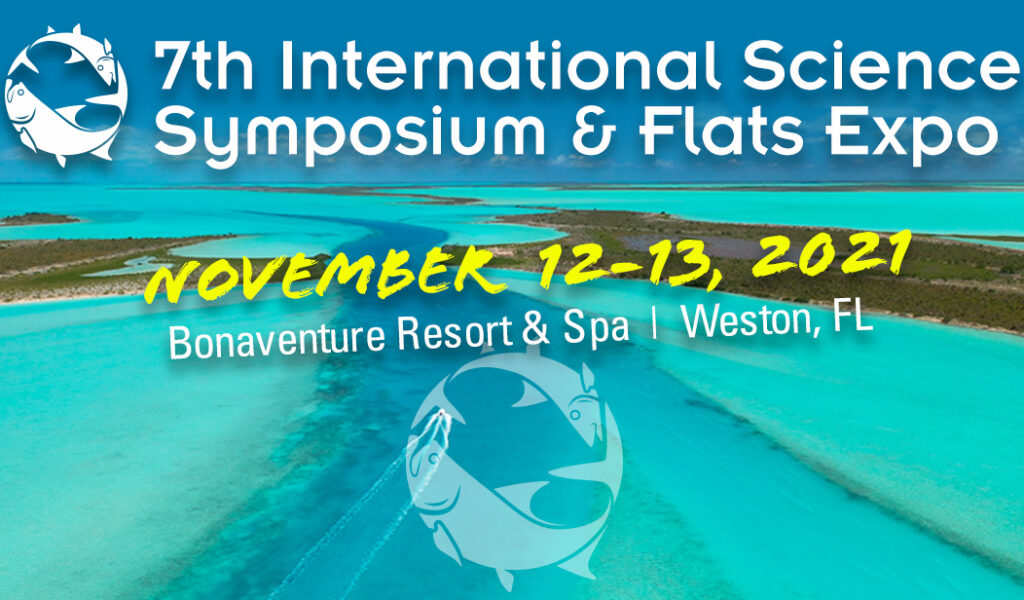Originally postponed from 2020 due to Covid-19, the 7th International Symposium will take place November 12-13, 2021, at the Bonaventure Resort & Spa in Weston, FL.
This notice serves as the first call for abstracts for science presentations.
Please share this email with colleagues who may be interested in participating.
The overall goal of BTT Symposia is to bring together internationally recognized marine scientists, resource managers, fishing guides, anglers, and educators to share information and learn from one another, and to translate science into conservation policy. The mix of attendees and diversity of presentations and expert panels is unique and empowering.
The theme for the 7th Symposium will be Conservation Connections. Conservation Connections occur in many ways, including:
– Research documenting the regional connections among populations of bonefish, tarpon, and permit and other flats fishes;
– Research and conservation of habitat connectivity;
– Connecting habitat and fisheries management;
– Habitat restoration research and applications to management;
– Education as a tool to share scientific findings with guides, anglers, and resource managers;
– Scientific findings being applied directly to policy;
– Connecting scientists with guides and anglers through research partnerships;
– Information sharing among scientists, guides, anglers, resource managers.
The Science Sessions at the 2020 Symposium will provide a forum to:
– Bring together world-class experts to discuss issues in flats research and conservation;
– Share the latest research results with an eye to policy applications;
– Plan additional research necessary to support evolving conservation needs;
– Promote discussions among resource managers, flats guides, anglers, and scientists on future directions for science, conservation, and education;
– Highlight the importance of education to conservation;
– Share conservation successes and challenges.
**********
Call for Abstracts:
If you submitted an abstract in 2020 and would like to use that same abstract for 2021, please let me know by email (if you haven’t already done so). I will transfer your abstract into my 2021 folders. If you submitted and abstract in 2020 and intend to submit a new abstract for 2021, please submit the new abstract by the deadline (May 15, 2021).
Both oral presentations and posters will be accepted. When submitting an abstract, please indicate your preference for oral or poster presentation. Preferences for oral presentations will be accommodated subject to space limitations.
Submitting your abstract: Abstracts must be submitted as a Word document attachment by email to aaron@bonefishtarpontrust.org.
The subject heading should be: BTT Symposium Abstract – (lead author’s last name)
Abstract Deadline: May 15, 2021. Notice of decision on abstracts will be given by June 15, 2020.
Abstract Format: Please use the format below. Please use Courier 12pt font (this makes formatting the Symposium Program much easier).
Example Abstract:
Emigration of Juvenile Snook and Tarpon from a Mosquito Control Impoundment is enhanced through a Draw-Down of Water Level in summer
Anthony Cianciotto1, Jonathan Shenker1, Aaron Adams2,3, David Heuberger4
1 Department of Biological Sciences, Florida Institute of Technology, 150 West University Boulevard, Melbourne, FL 32901 (acianciott2010@my.fit.edu). 2 Bonefish & Tarpon Trust, 135 San Lorenzo Avenue, Suite 860, Coral Gables, FL 33146; 3 Harbor Branch Oceanographic Institution, Florida Atlantic University, 5600 US-1, Fort Pierce, FL 34946. 4 Indian River Land Trust, 80 Royal Palm Pointe, Suite 301, Vero Beach, FL 32960.
Thousands of acres of marshland in the Indian River Lagoon (IRL) have been impounded for mosquito control. Most of these impoundments are under Rotational Impoundment Management (RIM), in which culverts connecting to the IRL are closed in the summer to control mosquito reproduction, and opened Oct-May to allow water exchange. We conducted a quantitative assessment of the emigration of juvenile snook and tarpon from the Bee Gum Point Nature Preserve impoundment in Vero Beach, Florida. 284 snook and 70 tarpon were marked with passive integrated transponder (PIT) tags and released back into the impoundment. Tag-detecting antennas around the culverts recorded minimal emigration when the culverts were open according to RIM in winter. Tagged juveniles remained trapped after the culverts were closed for the summer, but approached the antenna frequently. We therefore conducted an experimental summer draw down, opening culverts for 2 weeks in July. High rates of emigration were recorded for both juvenile snook and tarpon during the first two incoming tides of the draw down. This indicates that juvenile snook and tarpon are more likely to emigrate from impoundments during summer, when culverts are typically closed. These results suggest that impoundment management may be enhanced by including short term openings of culverts in summer to allow juveniles to emigrate, improving their value as nursery habitats.
Format preference: Oral
Presenter: Anthony Cianciotto
*******
We also intend to publish a Proceedings in a peer-reviewed journal. Details to follow.
The web page for the Symposium: https://bonefishtarpontrust.org/symposium/ This page includes links to registration (register for the Full Access Ticket: $250) and hotel reservations.
Limited funds will be available for student and international travel. Please contact me if you would like to apply for assistance.




